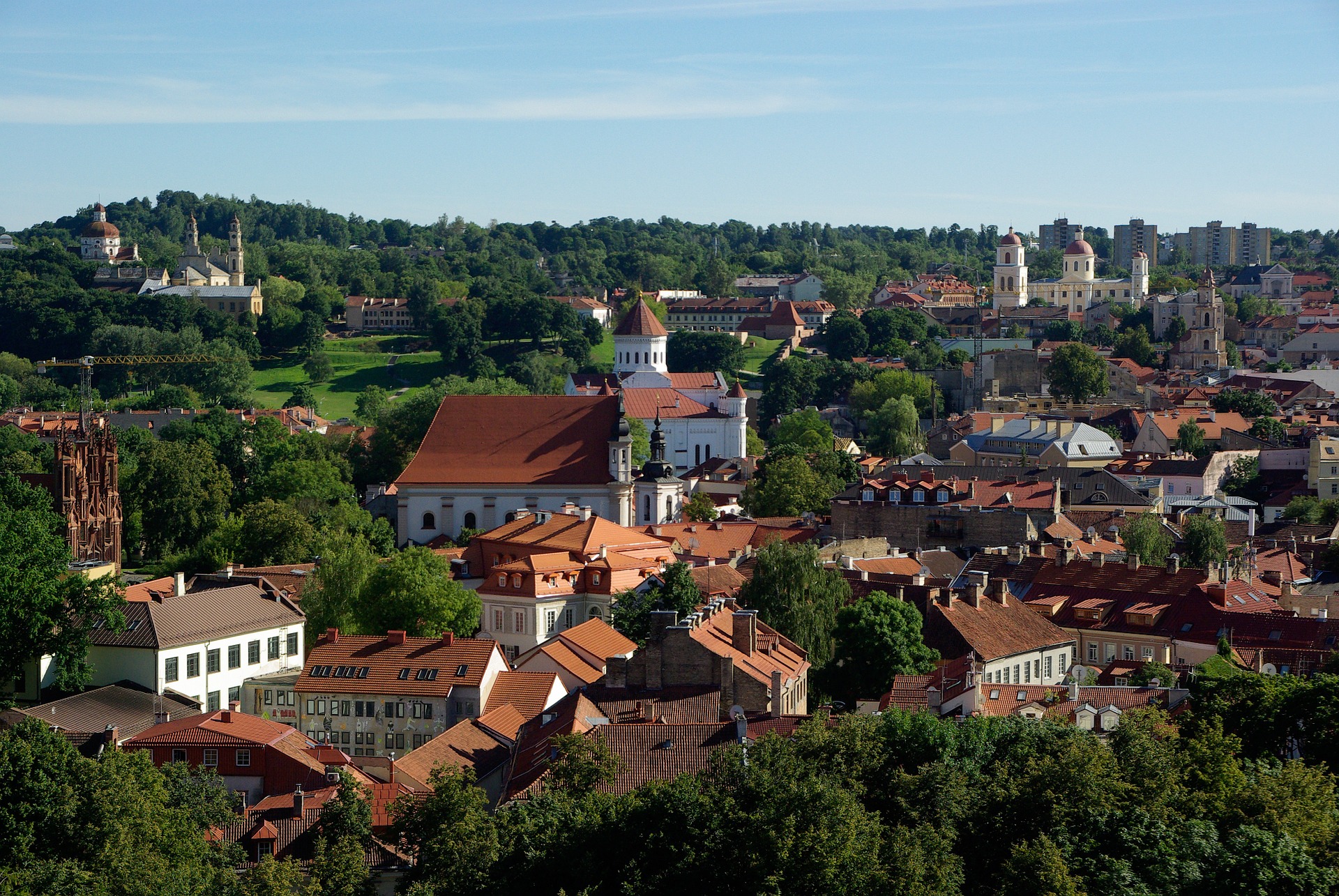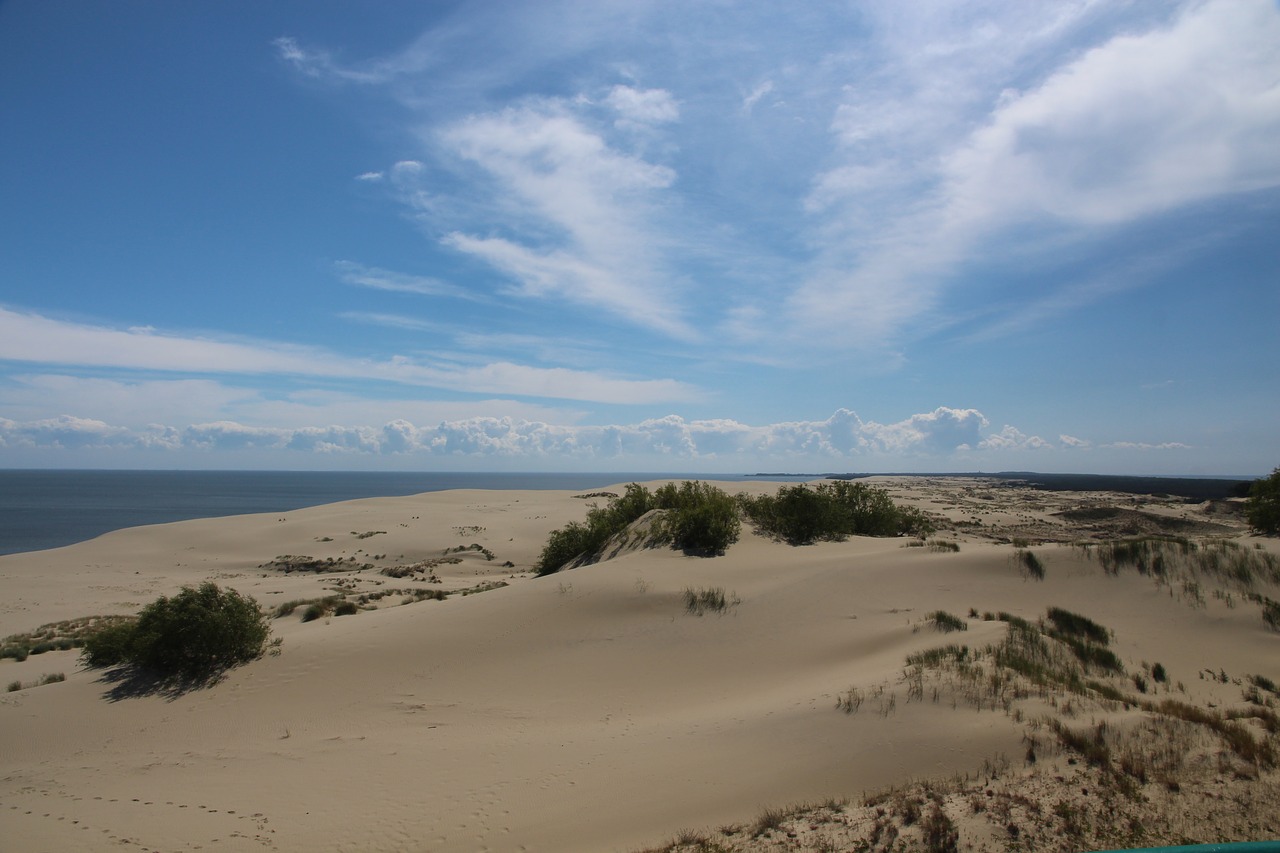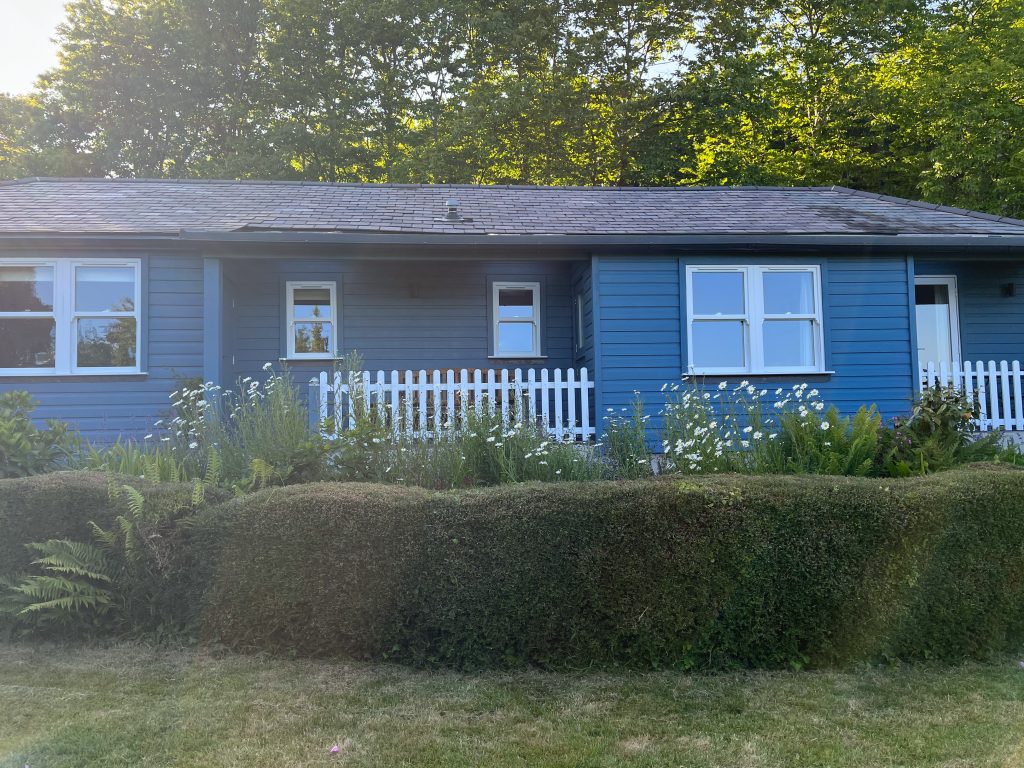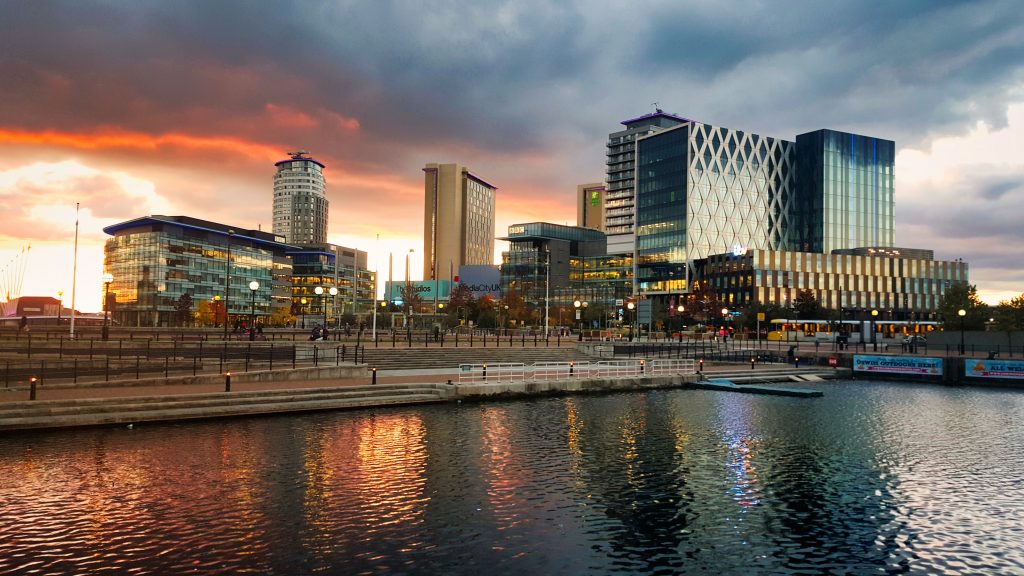Lithuania is a small country located in Eastern Europe that offers a range of places to visit for travellers. The capital city of Vilnius is known for its stunning Baroque architecture, bustling street markets, and lively nightlife. You’ll also want to visit cultural and historical landmarks like the Cathedral Square and Hill of Three Crosses.
The Curonian Spit is another top place to visit in Lithuania. This narrow, sandy peninsula stretches along the coast of the Baltic Sea and is separated from the Curonian Lagoon by dunes and forests. It’s the perfect place to go for a beach vacation, with crystal clear waters and sandy dunes. The charming fishing village of Nida is also worth a visit, with its wooden houses and beautiful lighthouse.
If you’re interested in history and culture, you won’t want to miss a visit to Trakai. Located just a short drive from Vilnius, Trakai is a medieval town situated on the shores of Lake Galvė. It’s home to the beautifully preserved Trakai Castle, which dates back to the 14th century and was once the residence of the Lithuanian Grand Dukes.
Lithuanian cuisine is a unique blend of Slavic, Baltic, and Scandinavian influences, with a focus on hearty meats, potatoes, and grains. I promise you, you won’t be hungry during your visit to Lithuania.
Vilnius Old Town
Vilnius Old Town is the charming and captivating heart of Lithuania’s capital city. The Old Town is the most visited place in Lithuania. It is home to many important landmarks, such as the Church of St. Anne, the Gate of Dawn, Hill of Three Crosses, and the Vilnius Cathedral.
Charming alleys, cobblestone streets, and captivating buildings that showcase a mix of Neoclassical, Gothic, and Renaissance architecture. It’s no surprise that it was added to the UNESCO World Heritage Site list in 1994.
The Old Town is best for first time visitors, and there’s more to explore beyond the stunning architecture – the Old Town is also home to some of the best lunch spots and exciting nightlife in the city. There are many restaurants, fantastic lunch spots, cafés, and shops to explore.
There are several options for getting around in Vilnius Old Town, including walking, cycling, and public transportation. Here are a few tips to help you navigate this area:
- Walking: The Old Town is relatively small and easy to explore on foot. It is a pedestrian-friendly.
- Cycling: If you prefer to travel by bike, you can rent a bicycle from one of the many rental shops in the Old Town. This is a great way to see the sights at your own pace and enjoy the fresh air. I recommend biking from late Spring until early Autumn. It might be too cold or rainy otherwise.
- Public transportation: The Old Town is well-served by public transportation, including buses, trolleybuses, and trams. You can use a single-ride ticket or purchase a multi-ride card to use on all forms of public transportation.
The best time to visit Vilnius is between May and September.
Want to see something even more spectacular? After visiting Vilnius, have a look at the Baltic Sea Coast of Lithuania and discover wonderful things to do in Klaipeda.

I found that it’s best to get a hotel in Vilnius and take day trips to other parts of the country, unless you are visiting in the summer to enjoy the beaches.
We really liked Artagonist Art Hotel, it’s very close to the old town. Alternatively, stay at Hotel Vilnia which is a 4* hotel just outside the busy areas, overlooking the park.
Užupis
After exploring the Vilnius Old Town, you can easily visit the unique and memorable Užupis, an independent state located just outside the Old Town. Užupis is known for its artistic and bohemian atmosphere, and even has its own Constitution.
Although I don’t want to ruin the surprise by listing what’s in it, let’s just say that it was created by eccentrics after the Soviet Union and has a playful and light-hearted approach to independence. Often compared to Paris’ Montmartre or Copenhagen’s Freetown Christiana, Užupis is located in the centre of Vilnius and is actually just a quirky part of the Old Town.
The name Užupis means “beyond the river” and it is indeed separated from the rest of the city by the Vilnia River. After the fall of the USSR, local artists erected a statue of US rock musician Frank Zappa as a symbol of freedom and democracy.
A few years later, they declared Užupis an independent state on April 1, 1997. While Užupis considers itself one of the smallest republics in the world, with its own government, president, and navy of small boats, it is not meant as a political statement but rather as an art project.
It is an exciting area loved by artists who pride themselves on treating everyone equally.
Trakai Castle
Visit the stunning Trakai Island Castle in Lithuania, a fairy-tale like fortress that is a must-see destination in both winter and summer. Located on a beautiful lake, the castle is surrounded by a charming small town called Trakai. There are three lakes surrounding the castle and town, Lake Galvė, Lake Luka, and Lake Bernardas.
Spend half a day exploring the castle museum and walking around the Old Town. If the weather is nice, rent a boat to float on the lake and admire the caste from below.
Take a walk in the nearby forests: Trakai is surrounded by forests, which are perfect for a leisurely hike or walk. You can also visit the Trakai National Park, which is home to a variety of flora and fauna.
While in Trakai, be sure to try the local “kibinai”, a delicious pastry filled with meat and the “cepelinai” which are potato dumplings. The best time to visit Trakai is early in the morning to avoid crowds and fully enjoy the beauty of the castle and town.
Trakai is home to many cultural events, including folk music and dance festivals, which are held throughout the year. Check the local events calendar to see what’s happening during your visit.
Trakai is easily accessible from Vilnius by public transport or a scenic bike ride.
Best option: Explore Trakai Castle on Full-Day Tour if you don’t fancy taking the bus.

Klaipėda
Klaipeda is a city with a rich history dating back 800 years, and it’s a great place to experience both the old and the new. As the gateway to the Curonian Spit, a famous coastal stretch in Lithuania, Klaipeda has a lively nightlife scene and plenty of restaurants, cafés and cultural attractions.
Klaipeda also has a lot of interesting historical landmarks, including cobbled squares, curious sculptures, and the Klaipeda Castle. You can also visit medieval docksides, Prussian bastions with cannons, and German-style beer halls in the main square.
Despite being overlooked as a top destination in Lithuania, Klaipeda is definitely worth a visit. It’s Lithuania’s third-largest town and its biggest port city, located at the Curonian Lagoon and the Baltic Sea.
Klaipeda, which was formerly known as Memel, was part of the Prussian Kingdom until 1923. This is why the architecture here is very different from the rest of Lithuania and includes beautiful wood-framed 18th century German-style buildings. Be sure to check out the Theater Square, the picturesque riverside of the Danes River, and the narrow streets and historic buildings of the Old Town. Another must-see is the Sea Museum.
Klaipeda is well-connected by road, rail, with several transportation options available, including buses, taxis, and rental cars. There are direct buses from Vilnius, the journey takes around 3 hours and tickets can be purchased at the bus station or online. The train also takes 3 hours, it is a bit pricier, but it is more comfortable than the bus. I would recommend the train, especially if you have a large suitcase with you.
The Curonian Spit
The Curonian Spit is a narrow, sandy peninsula that stretches along the coast of the Baltic Sea, separating it from the Curonian Lagoon. It’s a great place to go for a peaceful beach vacation, with crystal clear waters, sandy dunes, and pine forests. The Curonian Spit is a unique and breathtaking place that is definitely worth a visit.
In addition to its natural beauty, the Curonian Spit is also home to several charming villages, each with its own unique character and history. These villages offer a glimpse into the traditional way of life in the region, with their quaint wooden houses, narrow streets, and friendly locals.
You cannot miss The Hill of Witches. This sculpture park features over 100 wooden sculptures of witches, mythical creatures, and other fantastical beings, all created by Lithuanian artist Juozas Zikaras and inspired by Lithuanian folklore and mythology.
The park is open year-round and visitors can take guided tours or explore the park on their own.
One of the local specialities of the region is smoked fish, which is typically made from a variety of fish species that are commonly found in the Baltic Sea, such as cod, herring, and eel.
The beaches are walking distance from the centre of Klaipeda, but you will need to take a ferry from Senoji perkėla to get to the other side. I recommend joining one of the Curonian Spit tours that takes you to the beaches.
The best time to visit is between May and September. Off-season you will encounter a lot of snow and ice.

Palanga
Palanga is another city and resort in Lithuania, located on the Baltic Sea. It is the busiest summer resort in Lithuania and is known for its wide, sandy beaches and its lively nightlife. Palanga is also home to a number of cultural and historical attractions.
- Amber Museum: This museum features a large collection of amber artifacts, including jewelry, sculptures, and other decorative items made from amber.
- History Museum: This museum covers the history of Palanga and the surrounding region, including its cultural, social, and economic development.
- Museum of Ethnography: This museum displays traditional Lithuanian folk art and craft, including textiles, pottery, and woodcarving.
- Seaside Museum: This museum is dedicated to the history and culture of the Lithuanian seaside, with exhibits on the region’s maritime heritage, fishing, and other maritime activities.
The city also has a number of parks and nature reserves, including the Palanga Dunes, which are home to a variety of rare and endangered species.
Druskininkai
Druskininkai is a beautiful resort town located in the South of Lithuania. It’s known for its relaxing spas and therapeutic mud baths, making it the perfect place to escape from the stresses of everyday life.
The town is surrounded by picturesque forests and lakes, providing plenty of opportunities for outdoor activities such as hiking, cycling, and fishing. In the winter, the town transforms into a winter wonderland with cross-country skiing and ice skating.
But Druskininkai has more to offer than just spa treatments and outdoor adventures. The town is home to a rich cultural history, with several museums and galleries showcasing Lithuanian art and traditions.
- Druskininkai Regional Museum: This museum showcases the history and culture of the region, including exhibits on the local spa industry and traditional Lithuanian crafts.
- Grūtas Park: This open-air museum features Soviet-era statues and artwork, providing a unique glimpse into the country’s history.
- Druskininkai Aqua park Gallery: Located in the town’s aqua park, this gallery features works by local artists and changing exhibitions.
- Druskininkai Art Gallery: This gallery showcases contemporary Lithuanian art, including paintings, sculptures, and photographs.
- Snow Arena Gallery: Located in the town’s indoor ski slope, this gallery features a rotating selection of art exhibitions.
When it’s time to eat, there are plenty of delicious local restaurants and cafés to choose from. I highly recommend you to try “kugelis”, which is a hearty potato casserole that is baked with eggs and bacon and “vėdarai” a large sausage-like creation made from a mixture of potato, meat, and spices, and are traditionally served with sauerkraut.
Overall, Druskininkai is a wonderful destination for anyone looking to relax and recharge.
There are regular buses from Vilnius to Druskininkai that depart from the Central Bus Station. The journey takes about 2-3 hours. As before, I recommend the train which also takes about 3 hours, but it’s a bit more comfortable.

Kaunas
Kaunas is a city located in central Lithuania, and it’s the second-largest city in the country. It’s known for its rich history, beautiful architecture, and vibrant cultural scene.
Kaunas has a long and storied history dating back to the Middle Ages, and it has played a significant role in the development of Lithuanian culture and identity.
The city is home to numerous museums, galleries, and it hosts a range of festivals and events throughout the year. Get a local guide to show you around.
- The Devil’s Museum: This museum is home to a collection of over 3,000 devil-themed items from around the world, including sculptures, paintings, and other artifacts.
- The Ninth Fort Museum: This museum is located in a former Soviet fort and tells the story of the Holocaust and the Soviet occupation of Lithuania.
- The Kaunas Picture Gallery: This gallery is home to a collection of Lithuanian and international art, including paintings, sculptures, and other works.
Festivals in the summer:
- Kaunas Castle Jazz Festival: This annual jazz festival takes place in the summer and features a range of local and international jazz musicians.
- Kaunas International Film Festival: This film festival takes place in the fall and features a range of independent and international films, as well as workshops, panels, and other events.
If you are visiting in the winter, The Kaunas Christmas Market starts in late November or early December and runs for several weeks, culminating in the celebration of Christmas.
The market features a range of stalls selling traditional crafts, food, and other holiday-themed items. There are also live performances, such as carol singing and other musical acts, and other festive entertainment. Don’t forget to try “kvass” a traditional Lithuanian drink that is made from fermented bread or malt. Alternatively, most stalls sell mulled wine, which is a must during Christmas.
Kernave
Kernave is a small town in Lithuania, located about 50 km northwest of the capital city, Vilnius. It is known for its rich history and cultural heritage, as it was the capital of the medieval Grand Duchy of Lithuania from the 13th to the 16th centuries.
There are many things to see and do in Kernave, including visiting the Kernave Archaeological Site, which is another UNESCO World Heritage Site. The site includes the remains of several medieval castles and fortifications, as well as the Kernave Hill Fort, which offers panoramic views of the surrounding landscape.
Other popular attractions in Kernave include the Kernave Museum, which is dedicated to the history and culture of the region, and the Kernave Ethnographic Homestead, which is a reconstructed 19th-century farmstead that provides a glimpse into the daily life of rural Lithuanians in the past.
For food, try “balandėliai“. These are small, stuffed cabbage rolls that are filled with minced meat and rice, and are often served with a tomato or mushroom sauce.
If you enjoy outdoor activities, you can also explore the surrounding countryside, which is home to numerous nature trails and hiking routes. The town is also located near the Neris River, which is a popular spot for fishing, boating, and swimming in the summer months.
Take the bus to get from Vilnius to Kernave. The journey takes about one hour and buses run several times a day. I don’t recommend the train this time, as the walk from the train station to the centre is about 2 hours.
However, the easiest to get here is by joining one of the private tours that take you from Vilnius to Kernave and show you the history and culture of the city.

Don’t forget to book your hotel in Lithuania. In case you are staying in Vilnius, see our accommodation guide for each Vilnius neighbourhood.
Let me know how your trip was and if you have any other recommendations in the comments below. I would love to hear from you. Have a great trip in Lithuania.









Leave a Reply